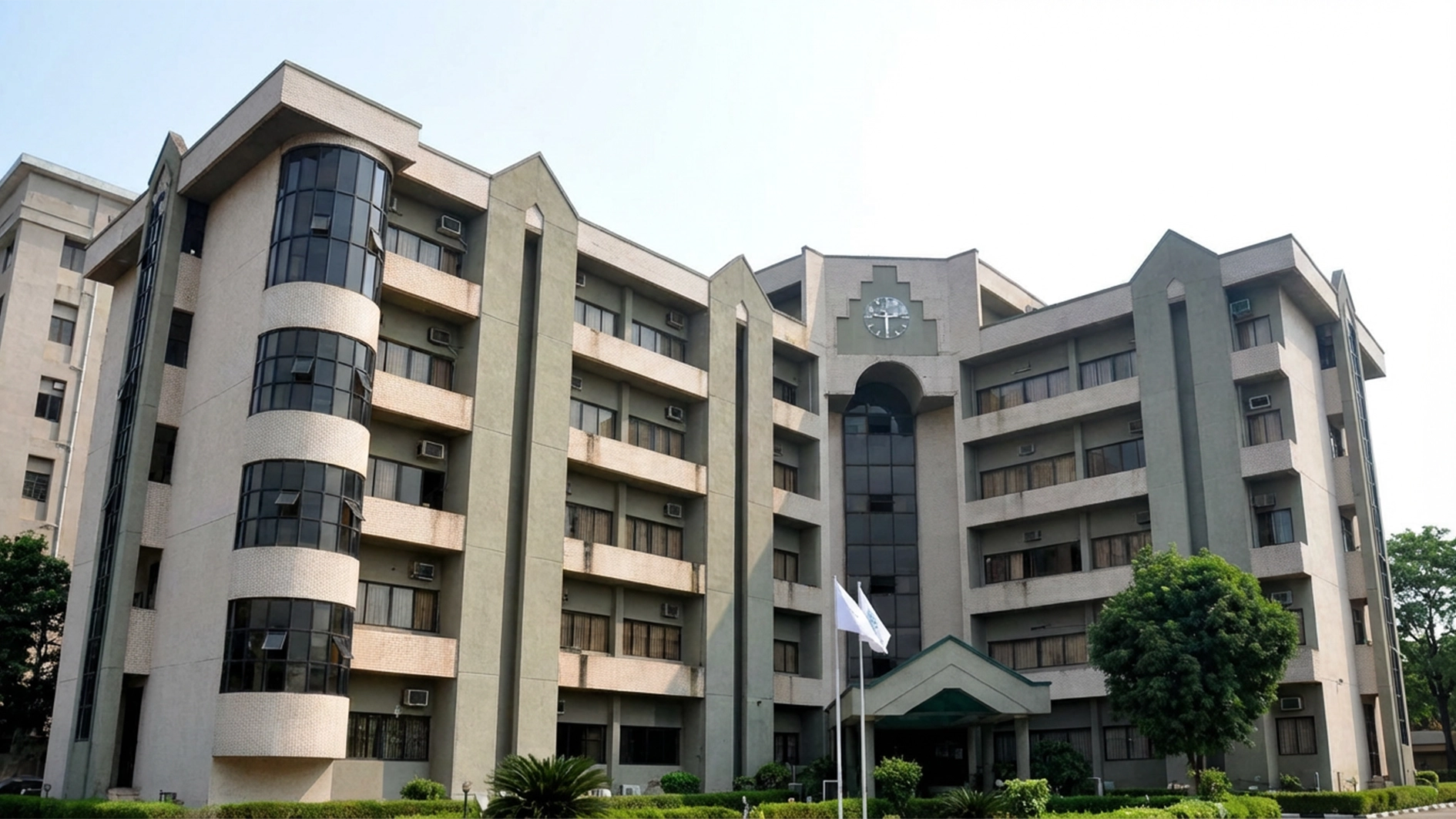
• Academy warns that high numbers of unvaccinated Nigerians pose a threat of deadlier strains
• Country surpasses 10% COVID-19 immunisation milestone, no longer among countries with least vaccination
The recent surge in COVID-19 cases and deaths in Nigeria and some other parts of the world have raised concerns. The quickly changing coronavirus has spawned yet another super contagious omicron mutant that is worrying scientists as it gains ground in India and pops up in numerous other countries, including the United States.
It is feared that the situation may lead to another shutdown, travel restrictions and mandatory wearing of facemasks.
Latest figures from the Nigeria Centre for Disease Control (NCDC) showed that Nigeria has tested 5,313,596 samples, with 258,517 confirmed cases, 4,985 active cases, 250,388 discharged cases and 3,144 deaths.
The NCDC warned: “In the last few weeks #COVID-19 cases have increased in Nigeria. Across the world, the number of people dying from the disease is increasing
“If you are not vaccinated, please consider getting the vaccine to protect yourself and loved ones @NCDCgov advice: https://bit.ly/3NMqroV.”
According to the NCDC, to date, 258,517 cases have been confirmed, 250,388 cases have been discharged and 3,144 deaths have been recorded in 36 states and the Federal Capital Territory. The 880 new cases are reported from eight States- Lagos (750), FCT (48), Rivers (40), Delta (21), Akwa Ibom (11), Kano (five), Nasarawa (four), and Plateau (one).
A multi-sectoral national emergency operations centre (EOC), activated at Level 2, continues to coordinate the national response activities.
Scientists say the variant, which is called BA.2.75, may be able to spread rapidly and get around immunity from vaccines and previous infections.
Indeed, health officials are once again raising the alarm about the threat of a resurgence of COVID-19 infections across the country, as concerns grow about the new omicron subvariant, BA.5, which is now the dominant viral strain in the United States (U.S.).
It is unclear whether it could cause more serious disease than other omicron variants, including the globally prominent BA.5. The United States Centres for Disease Control and Prevention (CDC) reports that two other subvariants, BA.4 and BA.5, constitute more than 70 per cent of new infections in the country. These subvariants may partially escape the immunity produced by the vaccine and by prior infection, though vaccination still likely protects against severe illness.
The BA.5 variant, first detected in South Africa earlier this year, is currently estimated to account for more than half- 53.6 per cent- of all new COVID-19 cases in the states, according to the CDC. BA.5 appears to have a growth advantage over the original omicron variant, according to the World Health Organisation (WHO), and scientists are closely monitoring the increase in reported cases observed in many countries across the globe.
At this time, BA.5 does not appear to have increased in severity, but officials have previously stressed that research on the new subvariant is still in its “early days,” and much remains to be learned about it.
Nearly three-quarters of the U.S. population is now living in a county with a high or medium community risk level for COVID-19, as defined by the CDC, federal data shows. About one-third of those people- 31.9 per cent- are living in a high-risk community, while 41.6 per cent are living in a medium-risk county.
A high community level suggests there is a “high potential for health care system strain” and a “high level of severe disease,” and the CDC recommends that people wear a mask in public indoor settings, including schools. A medium-risk level suggests there is “some impact on [the] health care system,” and “more people with severe disease.” Under the CDC’s official guidance, individuals considered at “increased risk” are advised to speak with their health care provider about whether to wear a mask.
In Nigeria, President, of the Academy of Medicine Specialties and Secretary-General International Federation of Fertility Societies (IFFS), Prof. Oladapo Ashiru, said the wearing of masks in Nigeria should not be relaxed. “Even in Britain with a high vaccination rate increase social gathering as occurred during the Queen Jubilee celebration lead to a rapid increase in COVID-19 cases,” Ashiru said.
Ashiru further explained: “The simple truth is that the COVID-19 is not gone. It would probably be with us for a very long time. There is no scientific basis for not using the mask, especially in a crowded social gathering where you are not sure who is a carrier or who has been fully vaccinated or not. In Nigeria, not everyone is fully vaccinated. Transmission is completely vaccinated individuals have been linked to the various variants of COVID-19 from delta to omicron and other variables.
At the recently concluded meeting of the European Society for Human Reproduction and Embryology (ESHRE) some of the delegates from the United States of America reported getting positive for COVID-19 even after getting the 4th vaccination (booster).”
Ashiru said it is now very clear that no amount of vaccination can prevent one from having COVID-19 symptoms if exposed to it. “The clear warning is to be protected using the mask especially when you are in the company of a large number of people that you are not sure of their vaccination history,” he said.
The physician said for people with underlying conditions such as diabetes, cardiac disease, and smokers with compromised lung function, exposure to COVID-19 even after vaccination can be fatal. Ashiru said it is recommended that those who show symptoms such as common cold, sore throat, or fever, must seek immediate attention and remedy before it spreads into the respiratory tract.
He said, in the long run, new vaccines are being produced that will immunise against the newer variants, but it looks like it may become yearly flu shots as done in the United States or people would have to adapt to wearing masks in a large social gathering.
Ashiru said the total number of cases continues to rise worldwide while the number of deaths is not increasing that fast, especially among those who have been vaccinated. “Definitely if people have underlying conditions it might lead to death. Right now COVID-19 presents also like malaria but is caused by different pathogens. In conclusion, it is better safe than sorry,” he said.
Meanwhile, in the US, counties on both coasts- most notably in California, Montana, New Mexico and Oregon- are moving up and entering the high-risk level. In Florida, nearly every county is currently considered high risk. Puerto Rico and California currently lead the nation in new cases per capita, followed by New York City, where officials are once again urging residents to wear high-quality masks in indoor public settings and around crowds outside, amid a renewed surge of infections in the city.
“We’re currently seeing high levels of COVID-19 in NYC. To help slow the spread, all New Yorkers should wear a high-quality mask, such as an N95, KN95 or KF94 in all public indoor settings and around crowds outside,” the New York City Health Department wrote in a tweet on Friday, after the city moved back into the high-risk level.
The average number of new cases across New York City is up by 25 per cent in the last two weeks, according to federal data. City data also shows that an average of 15 per cent of reported tests are now coming back positive, marking the highest seven-day positivity rate in months.
Scientists say the variant – called BA.2.75 – may be able to spread rapidly and get around immunity from vaccines and previous infections. It is unclear whether it could cause more serious disease than other omicron variants, including the globally prominent BA.5.
“It’s still really early on for us to draw too many conclusions,” said Matthew Binnicker, director of clinical virology at the Mayo Clinic in Rochester, Minnesota. “But it does look like, especially in India, the rates of transmission are showing kind of that exponential increase.” Whether it will outcompete BA.5, he said, is yet to be determined.
Still, the fact that it has already been detected in many parts of the world even with lower levels of viral surveillance “is an early indication it is spreading,” said Shishi Luo, head of infectious diseases for Helix, a company that supplies viral sequencing information to the U.S. Centers for Disease Control and Prevention.
The latest mutant has been spotted in several distant states in India, and appears to be spreading faster than other variants there, said Lipi Thukral, a scientist at the Council of Scientific and Industrial Research Institute of Genomics and Integrative Biology in New Delhi. It is also been detected in about 10 other countries, including Australia, Germany, the United Kingdom and Canada. Two cases were recently identified on the West Coast of the U.S., and Helix identified a third U.S. case last week.
Fueling experts’ concerns are a large number of mutations separating this new variant from omicron predecessors. Some of those mutations are in areas that relate to the spike protein and could allow the virus to bind onto cells more efficiently, Binnicker said.
Another concern is that the genetic tweaks may make it easier for the virus to skirt past antibodies — protective proteins made by the body in response to a vaccine or infection from an earlier variant.
But experts say vaccines and boosters are still the best defence against severe COVID-19.
It may take several weeks to get a sense of whether the latest omicron mutant may affect the trajectory of the pandemic. Meanwhile, Dr Gagandeep Kang, who studies viruses at India’s Christian Medical College in Vellore, said the growing concern over the variant underlines the need for more sustained efforts to track and trace viruses that combine genetic efforts with real-world information about who is getting sick and how badly. “It is important that surveillance isn’t a start-stop strategy,” she said.
Luo said BA.2.75 is another reminder that the coronavirus is continually evolving – and spreading.
“We would like to return to pre-pandemic life, but we still need to be careful,” she said. “ We need to accept that we’re now living with a higher level of risk than we used to.”
Meanwhile, Nigeria, last week, surpassed the 10 per cent (of the total population) fully vaccinated COVID-19 vaccination milestone – commendable progress in curbing vaccine inequity and protecting lives. The milestone is a result of continued efforts by the government and stakeholders in rolling out relevant strategies to sustain COVID-19 vaccination amidst competing health priorities.
Nigeria started COVID-19 vaccination on March 5, 2021, upon receiving four million vaccine doses from the COVAX Facility, to protect frontline workers and elderly people with chronic health conditions. COVAX is the major supplier of COVID-19 vaccines to Nigeria and the African continent.
The country’s vaccination efforts have been characterised by several strategies undertaken in partnership with stakeholders – including campaigns for awareness, mass vaccination sites, incorporation of COVID-19 vaccination in routine immunisation campaigns as well as innovative approaches such as the introduction of a vaccination sites finder app.
The National Primary Health Care Development Agency (NPHCDA) recently launched the SCALES 3.0 strategy to further increase coverage going forward through additional campaigns, including integrated campaigns with other vaccines.
Director of COVID-19 Vaccine Delivery, Coordination and Integration at Gavi, the Vaccine Alliance, which leads on procurement and delivery at scale for COVAX, Dr Richard Mihigo, comments on Nigeria’s progress: “Nigeria has surpassed 10 per cent of its population with two doses of COVID-19 vaccines. This milestone is hugely significant given the size of the country, population and competing for health priorities including routine immunisation.
The Optimised SCALES 2.0 strategy has been key to ensuring rapid and sustainable improvement in routine immunization coverage and integration of COVID-19 vaccination. The country has also increased the number of vaccination and immunisation sites across the country as well as included private health facilities in the vaccine rollout.






